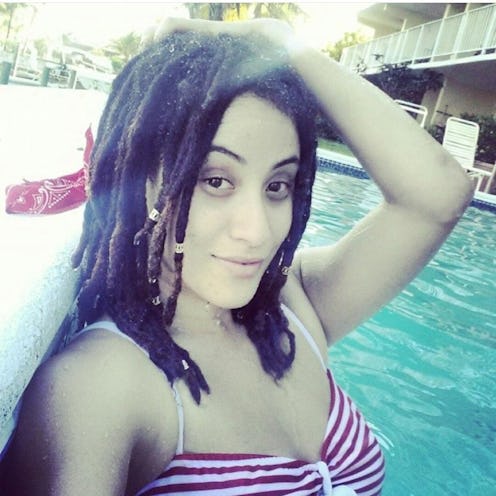
I can't claim to be an avid swimmer, in fact, I'm not entirely confident I know how to swim at all. With a lifetime of afro-textured hair struggles under my belt I steered clear of chlorine to prevent further damage until I realized there was a way to protect your natural curls while you swim. Other than wearing a swimming cap, I knew of no natural remedy to protect my hair from chlorine. For the record, I am not a fan of the swim cap. They do more hair-pulling and curl snagging then they do protecting, you're hair is still going to get wet and I find them as uncomfortable as they are misleading. The last thing I want is anyone to be fooled into thinking I'm an expert in the water and could potentially save another life. No, I'm relying on hope and human instinct when I accidentally find myself submerged under water in the deep end. Lastly, most swim cap do not keep your hair from getting wet.
While you may be wishing there were more chlorine-free pools out there to protect your hair while you backstroke, protecting ourselves from E.coli is way more important. Chlorine is added to the stagnant water so we can swim worry-free. That doesn't stop me from hating on the smell and damage chlorine causes, when I had relaxed hair I would dip in the pool more often despite being slightly terrified that the mixture of chlorine and my chemical relaxer would burn all my hair off. All hair is affected by chlorine and with the fragile nature of curly kinky, some extra attention is needed before and after you dip.
Before You Swim
According to sources at Curly Nikki, you should not be swimming with kinky curls flowing around you. Put your hair in a braid or protective style that's going to keep your curls and braids from getting tangled. The most important part of your pre-swim routine is to use a protective sealant that penetrates your hair deeply. I like applying a combination of coconut oil, lavender, and castor starting from the ends up to the root before I braid.
After You Swim
The first thing I do after I get out of the pool is rinse my hair out. If I'm not close to a shower, I will find a way to rinse the chlorine out of my hair because the longer it stays in, the more potential for hair breakage. If it will be hours before you see the inside of a shower, apply your protective sealant after you rinse out the chlorine. No matter how much time has passed, be sure the next thing you do to your hair is clean and condition. This is ultimately what's going to save your hair. No more running from pools or shouting death threats when you get splashed by water during your pool-side hangs: chlorine ain't no thang.
Image: Dionysius Burton , Justin Merrick/Flickr; Giphy; Kristin Collins Jackson, Scarlett